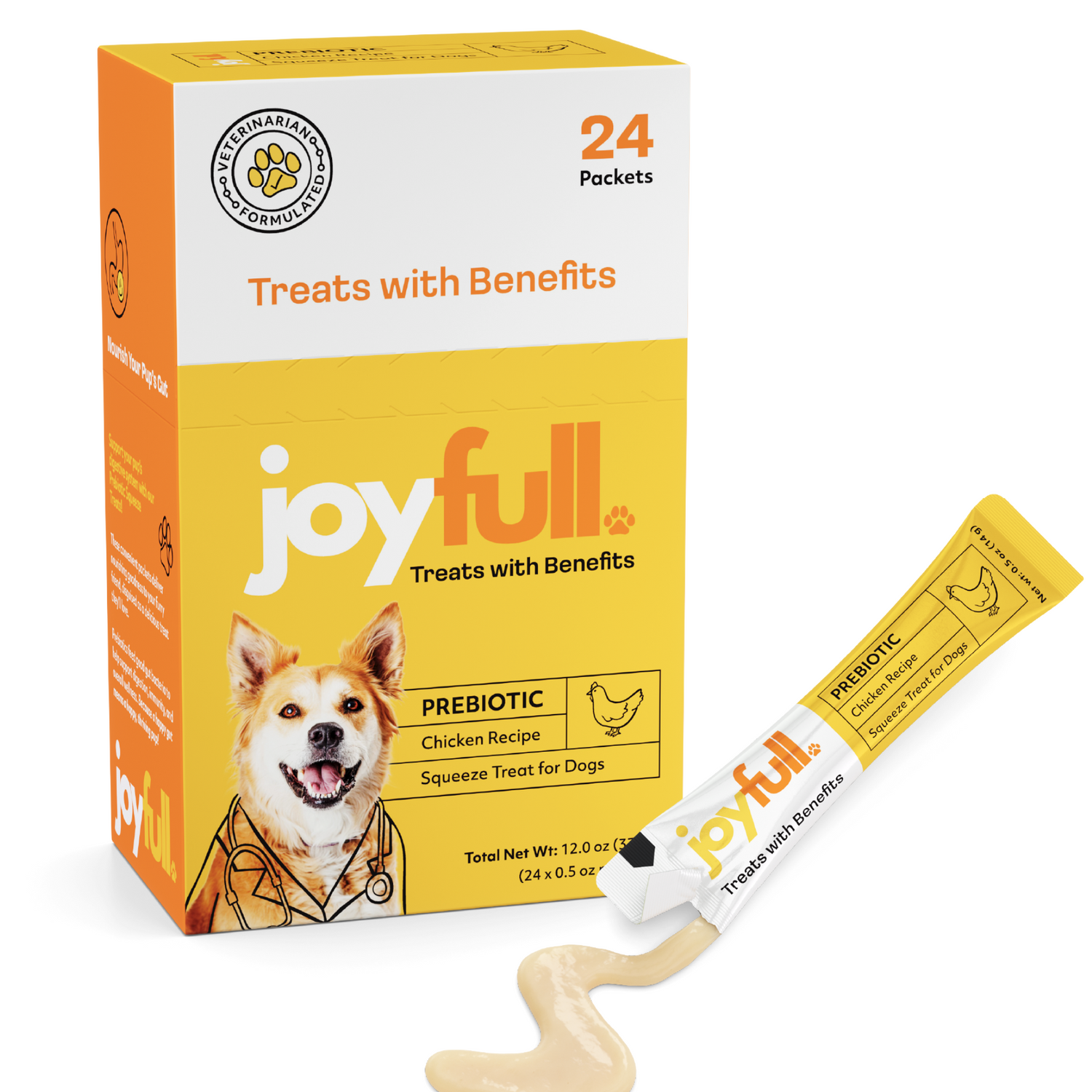
How to Choose Cat Food Your Owner's Guide
Choosing the right cat food doesn't have to feel like a monumental task. When it comes down to it, the best choice really balances just three things: your cat's specific life stage, their overall health, and the ingredient quality of the food itself. For the vast majority of healthy cats, a diet rich in high-quality, meat-based protein and low on cheap fillers is the gold standard.
Your Quick Guide to Picking the Right Cat Food
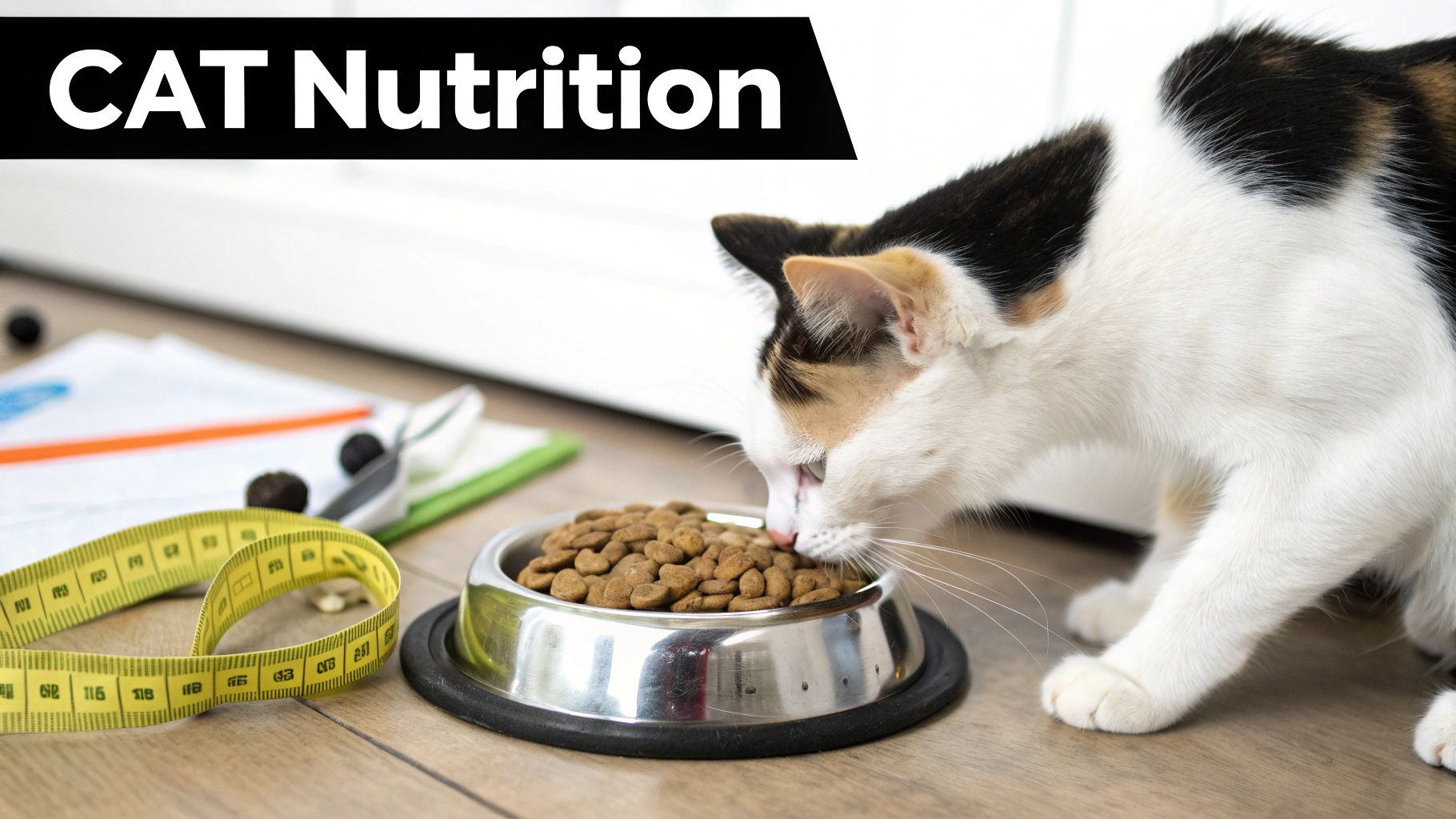
This is your cheat sheet for navigating the pet food aisle. We're going to cut through all the confusing marketing jargon and give you a straightforward way to feel confident about the bag or can you put in your cart.
At the heart of it all is one simple truth: cats are obligate carnivores. This isn't just a fancy term; it means their entire biology is built to run on animal protein. Keeping that single fact in mind will be your guiding star for every food decision you make.
Core Decision Factors
Standing in front of a wall of cat food can be overwhelming. To keep it simple, just focus on these three key areas.
-
Your Cat’s Profile: How old are they? Are you feeding a tiny, energetic kitten, a laid-back adult, or a senior cat who's slowing down? Think about their activity level and any specific health quirks, like a sensitive stomach or a need to lose a few pounds. A growing kitten’s nutritional needs are worlds away from a 12-year-old indoor cat's.
-
Food Type: The classic debate is wet versus dry food. Honestly, both have their place. Wet food is fantastic for hydration—a huge plus for urinary tract health—while dry kibble is often more convenient and budget-friendly. Many owners (myself included) find that a mix of both works beautifully.
-
Ingredient Quality: This is where you have to put on your detective hat and read the label. The first few ingredients listed tell you almost everything you need to know about the food's quality.
The single most powerful tip I can give you is this: read the first five ingredients. You want to see a named protein, like "deboned chicken," "turkey," or "salmon." If you see vague terms like "meat by-products" or a grain like corn listed first, it’s a red flag.
This simple check is your fastest way to weed out the lower-quality foods. Those that lead with fillers like corn, wheat, or soy just don't offer much nutritional value to a carnivore and can sometimes even cause issues down the line. It's all about making a choice that fuels your cat for a long, happy life.
To make this even easier, here's a quick-reference table to help you match the right food to your cat's needs.
Cat Food Selection at a Glance
| Factor | Key Considerations | Why It Matters |
|---|---|---|
| Life Stage | Kitten, Adult (1-6 years), Senior (7+ years) | Nutritional needs change dramatically. Kittens need more calories and protein for growth; seniors need joint support and fewer calories. |
| Health Profile | Weight, allergies, urinary health, dental issues | Specific health conditions often require specialized diets, like weight management formulas or grain-free options for sensitivities. |
| Food Type | Wet, Dry, or a Mix | Wet food boosts hydration and is often more palatable. Dry food helps with dental health and is convenient for free-feeding. |
| Ingredient List | Named protein as the first ingredient (e.g., chicken, salmon) | As obligate carnivores, cats thrive on animal-based protein. This should be the foundation of their diet, not plant-based fillers. |
Ultimately, choosing a food comes down to knowing your cat and knowing what to look for on the label. By focusing on high-quality protein and a formula that matches their life stage, you're setting them up for a lifetime of good health.
Your Cat's Diet: Matching Food to Their Life Stage and Health
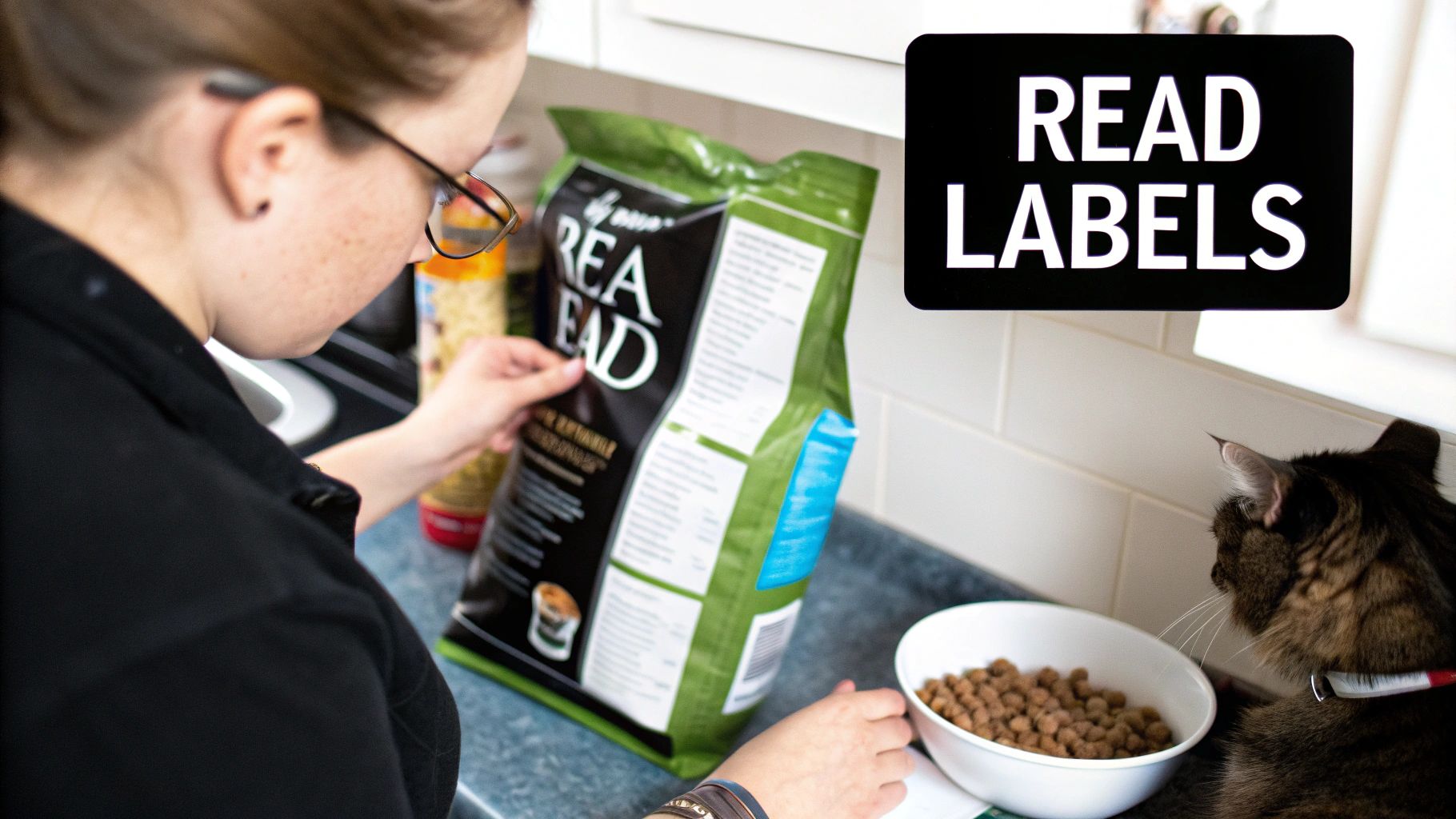
It sounds obvious, but it's the most important rule of cat nutrition: every cat is an individual. A one-size-fits-all food just doesn't cut it. To really nail down how to choose the right cat food, you have to play detective and look closely at your own cat's life stage and overall health.
A pouncing, playful kitten has completely different nutritional needs than a laid-back adult or a senior cat who’s gracefully settling into their golden years. We're not just talking about bigger or smaller portions; the actual nutrient formulas need to change to support their bodies at each distinct phase.
For Kittens: Fueling Rapid Growth
Kittens are little whirlwinds of energy, and their food must provide the high-octane fuel for all that growing. During their first year, they need a serious boost in calories, protein, and specific minerals like calcium compared to their adult counterparts.
Always look for a food specifically labeled for "kittens" or sometimes "all life stages." A good kitten formula will be packed with:
- Higher Protein: To build strong muscles, organs, and tissues.
- More Calories: To keep up with their non-stop energy and constant growth spurts.
- DHA: This is an omega-3 fatty acid that’s absolutely vital for healthy brain and eye development.
Think of this first year as building the foundation for a lifetime of health. Cutting corners here can unfortunately lead to problems down the road.
For Adult Cats: Striking the Right Balance
Once your cat hits their first birthday, they've officially entered adulthood. Their nutritional needs shift dramatically from frantic growth to long-term maintenance. This is the stage where, if we're not careful, those extra pounds can start to creep on.
For an adult cat (generally from age 1 to 7), the goal is to find a food that maintains their ideal body weight and condition. A huge factor here is their lifestyle. An indoor cat who has perfected the art of napping needs far fewer calories than a cat who has access to a "catio" or a safe outdoor space for running and exploring.
A Pro Tip From Experience: Don’t just blindly follow the feeding chart on the bag. Those are just starting points. You need to adjust the portion size based on your cat’s actual body condition. You should be able to feel their ribs under a thin layer of fat, and when you look down at them from above, you should see a clear "waist" or tuck.
For Special Health Needs: Targeted Nutrition
Beyond just age, specific health conditions require very specific diets. This is where a conversation with your vet is essential, as the right food becomes a crucial part of managing their health.
For instance, a cat diagnosed with Chronic Kidney Disease (CKD) will likely be prescribed a therapeutic diet low in phosphorus and with highly digestible protein to ease the strain on their kidneys. If you're dealing with food sensitivities, a limited-ingredient diet that cuts out common triggers like chicken or fish can work wonders. And for overweight cats, a good weight management formula offers fewer calories but is high in fiber to help them feel satisfied.
This growing focus on targeted nutrition is part of a larger trend: we're treating our pets more like family. As this "humanization" continues, the demand for high-quality, specialized foods has exploded. The global cat food market was recently valued at USD 38.26 billion and is expected to keep growing as owners look for the very best. For a deeper dive, you can read more about the growing cat food market on Straits Research.
Decoding Cat Food Labels and Ingredients
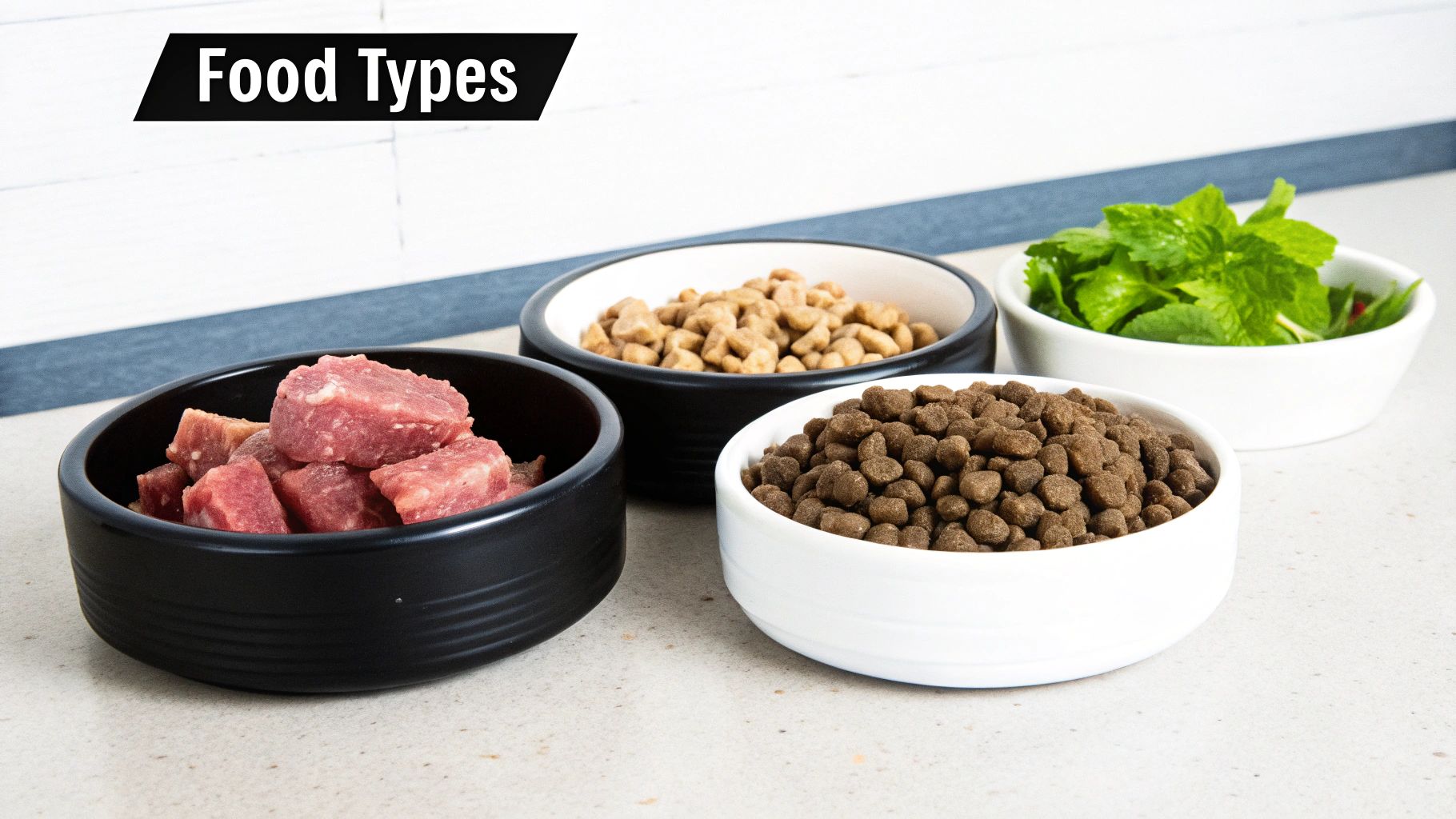
Walking down the cat food aisle can be overwhelming. The bags and cans are covered in appealing claims and pictures of happy cats, but the real story is on the back. Learning to read a cat food label is like cracking a code, but once you know what to look for, you can see past the marketing and truly understand what you're buying.
The single most revealing part of any package is the ingredient list. Legally, ingredients have to be listed by weight, from most to least. This is a huge advantage for us. It means the first five ingredients are the most important, telling you almost everything you need to know about the food's quality.
Identifying Quality Protein Sources
Cats are obligate carnivores, which is just a scientific way of saying they must eat meat to survive. This makes the protein source the most critical component of their diet.
What you want to see at the top of that list are specific, whole-animal proteins. Think of it this way: if it sounds like something you'd recognize at a butcher shop, you're on the right track.
Look for clear terms like:
- Deboned chicken
- Turkey
- Salmon
- Lamb
- Beef
On the flip side, be cautious of vague, generic descriptions. These are often used to hide lower-quality, less digestible ingredients that manufacturers would rather not specify.
Be on the lookout for red flags such as:
- Meat by-products: This is a catch-all term for what’s left after the prime cuts are taken. While it can include nutritious organs, the lack of specificity is the problem. You don't know the source or the quality.
- Poultry by-product meal: Same issue, but with poultry. Is it chicken? Turkey? Something else? The inconsistency is a concern.
- Meat and bone meal: Another vague, low-quality protein that should be avoided.
A simple rule I follow is this: if the label doesn't name the animal, I don't buy the food. "Chicken" is transparent. "Meat" is a mystery I don't want my cat solving.
Spotting Unnecessary Fillers and Additives
Once you've confirmed a solid protein source, your next job is to play detective and spot the fillers. These are cheap carbohydrates used to add bulk and cut costs, but they offer very little nutritional value for a carnivore.
A few carbs are fine, but they shouldn't be the stars of the show. Keep an eye out for these common fillers, especially if they appear high up on the ingredient list:
- Corn and corn gluten meal
- Wheat and wheat gluten
- Soy products
- Cellulose
Artificial additives are another thing to watch for. A truly high-quality food doesn't need fake colors (your cat doesn't care!) or artificial flavors to be enticing. The use of chemical preservatives like BHA, BHT, and ethoxyquin is a major warning sign. It's always better to opt for foods preserved naturally with tocopherols (Vitamin E).
This same critical eye should be applied to what you give your cat between meals. Treats can either support their health or fill them with junk. To continue this line of thinking, check out our guide on high-protein cat treats, which applies these same label-reading principles.
Wet vs. Dry Food: What’s Really Best for Your Cat?
https://www.youtube.com/embed/SS3VCGyfPEA
One of the biggest questions I get from fellow cat owners is about the age-old debate: wet food or dry food? It’s a classic crossroads, and frankly, there's no single right answer that fits every cat. The best choice really boils down to your cat’s specific health needs, your daily routine, and of course, your budget. Let's break down the real-world pros and cons.
Why Wet Food is a Hydration Powerhouse
The strongest argument for wet food comes down to one critical thing: moisture content. Cats have a notoriously low thirst drive, a leftover trait from their desert-dwelling ancestors who got most of their water from the prey they ate. This can be a real problem, sometimes leading to chronic low-level dehydration that puts a strain on their kidneys and urinary system.
Wet food is a game-changer here. Most canned or pouched foods are about 70-80% water, so your cat is hydrating with every single bite. This is a huge win for any cat, but especially for those susceptible to urinary tract crystals, kidney disease, or even constipation. On top of that, many finicky eaters just can't resist the rich aroma and texture of wet food.
The Practical Perks of Dry Food
On the other side, we have dry food, or kibble. Let's be honest, its biggest advantage is convenience. You can leave a bowl of kibble out for your cat to graze on throughout the day without worrying about it spoiling. For anyone with a hectic schedule, this is a major plus. It’s also typically easier on the wallet than a wet-food-only diet.
Many people also believe dry food helps with dental health. The idea is that the crunchy texture helps scrape away some plaque as your cat chews. While it’s absolutely not a replacement for proper dental care like brushing or professional cleanings, it can offer a small daily benefit for their oral hygiene.
Finding the Best of Both Worlds
So, what's the verdict? For many cats, the ideal solution isn't an "either/or" choice but a combination of both.
My go-to recommendation for most healthy cats is a mixed-feeding approach. Serve a meal of wet food once or twice a day to pack in that essential hydration, and leave a small portion of high-quality dry food out for them to nibble on.
This strategy gives you the hydration benefits of wet food along with the convenience and dental support of kibble. It’s a balanced compromise that works beautifully for a lot of feline households.
To help you visualize the trade-offs, here’s a quick comparison of the main food types, including raw, which is another popular option for dedicated owners.
Wet vs. Dry vs. Raw Food Comparison
| Food Type | Primary Benefits | Potential Drawbacks | Best For |
|---|---|---|---|
| Wet Food | High moisture content (70-80% water), very palatable, often lower in carbs. | More expensive, spoils quickly, requires refrigeration after opening. | Cats with urinary or kidney issues, picky eaters, and those needing to manage weight. |
| Dry Food | Convenient for free-feeding, cost-effective, can help reduce tartar buildup. | Low moisture, often higher in carbs, can contribute to overeating. | Busy households, cats with healthy drinking habits, and as a supplement to wet food. |
| Raw Food | Mimics a natural ancestral diet, high in protein, minimal processing. | Risk of bacterial contamination (for cats and humans), requires careful handling and prep, expensive. | Cats with specific allergies or digestive sensitivities, under guidance from a vet. |
Ultimately, this table shows there's a good option for almost any situation. The key is matching the food type to your cat's health profile and your lifestyle.
The Big Picture: Quality Over Type
This whole discussion is part of a much larger trend. Today's pet owners are more invested than ever in providing premium, functional nutrition. The global pet food market was valued at nearly US$158 billion recently, and experts predict it will climb to over US$237 billion in the next five years. You can find more details on the evolving pet food market on knowledge-sourcing.com. This explosive growth is fueled by our demand for better ingredients and foods that support specific health goals.
So, whether you land on wet, dry, raw, or a mix, remember this: the quality of the ingredients is far more important than the format. A high-protein wet food with named meats is infinitely better than a cheap, grain-filled kibble—and a quality, meat-first kibble beats a low-grade, mystery-meat canned food every time. Always, always read the label.
How to Transition Your Cat to a New Food
So, you've done all the hard work and found what looks like the perfect new food for your cat. Excellent! But don't just swap out the bowls yet. The final, and arguably most critical, piece of the puzzle is the transition itself. A sudden change can wreak havoc on a cat's delicate digestive system, leading to everything from a stubborn hunger strike to vomiting and diarrhea.
The secret? Go slow and steady.
Think of it this way: you're giving your cat’s internal ecosystem—their gut microbiome—time to adjust to different ingredients and a new nutritional balance. A gradual transition over 7 to 10 days is the gold standard for a reason. Rushing this is probably the single biggest mistake I see owners make. They often end up blaming the new food when the real culprit was the abrupt switch.
Crafting a Smooth Transition Schedule
The process is surprisingly simple. You'll just mix a small amount of the new food with their current food, slowly increasing the proportion of the new stuff over a week or so.
A great starting point is this 7-day schedule:
- Days 1-2: 75% old food, 25% new food
- Days 3-4: 50% old food, 50% new food
- Days 5-6: 25% old food, 75% new food
- Day 7: 100% new food
If you know you have an especially picky or sensitive cat, don't be afraid to stretch this out. A 10 or even 14-day timeline with smaller incremental changes works just as well. The goal is a happy cat, not a race to the finish line.
During this whole process, become a bit of a litter box detective. Your cat's stool is the best report card for how the transition is going. It should stay firm and well-formed. A little softness can be okay, but if you notice persistent diarrhea, just pump the brakes. Go back to the previous food ratio for a couple of days before trying to move forward again.
This careful approach to feline nutrition is part of a much larger global trend. The cat food market is already a massive USD 66.6 billion industry and is expected to climb to USD 91.3 billion in the next decade. This growth is fueled by owners like you who are demanding better quality. Still, conventional foods make up about 58% of sales, which tells us that while people want the best, budget is still a huge factor for many.
This visual guide is a handy reminder of what to avoid in lower-quality foods—the very things you're likely transitioning away from.
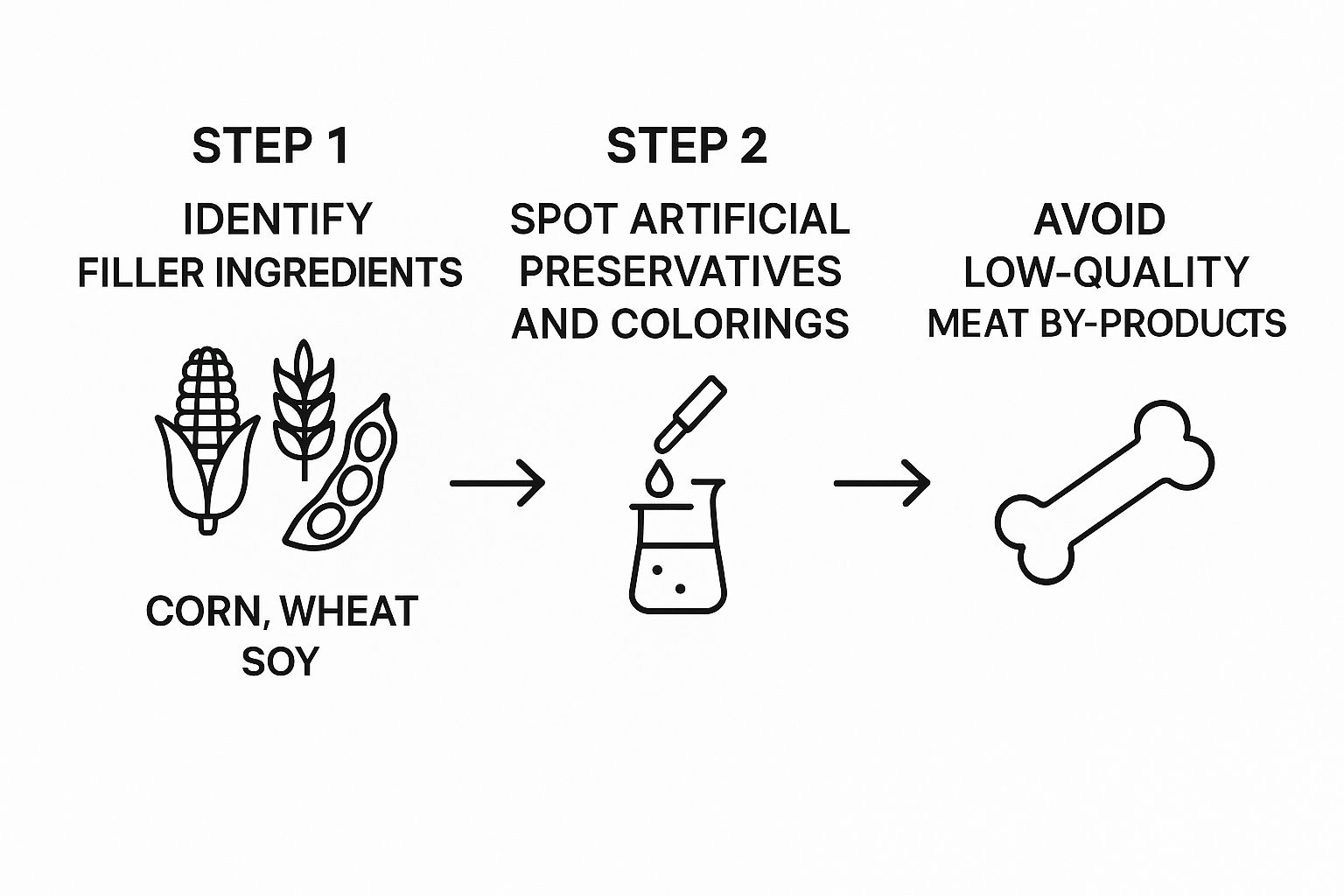
Spotting fillers, artificial junk, and vague "by-products" on an ingredient list is step one. Slowly moving your cat onto a diet free from these is step two.
What to Do with a Picky Eater
But what happens if your cat gives the new mixture a disdainful sniff and walks away? First, don't panic. It's incredibly common. Some felines are just naturally suspicious of anything new.
If you hit a wall of kitty resistance, here are a few tricks I've seen work wonders:
- Add a Tasty Topper: A little sprinkle of their absolute favorite treat, a splash of tuna juice (from tuna packed in water, no salt!), or some freeze-dried meat crumbled on top can make the new food irresistible.
- Serve It Warm: If you're using wet food, warming it up just slightly can release the aroma and make it far more appealing to a skeptical cat.
- Use Positive Reinforcement: When they finally take a bite, offer praise and a gentle pet. Associating the new food with good things can make a huge difference. You can get some great ideas from our guide to healthy homemade cat treats.
Ultimately, patience is your most valuable tool here. By making the switch a slow, positive, and gentle process, you’re ensuring this final step is a complete success for both you and your cat.
Common Questions About Choosing Cat Food
Even after you've done your homework, reading labels and comparing different brands, a few questions can still linger. It’s a big responsibility, and wanting to get it just right for your cat is completely normal. I've heard these same questions from countless cat owners over the years, so let's clear them up and help you feel confident in your choice.
Is Grain-Free Food Always Better for Cats?
This is probably one of the most persistent myths out there. The short answer? No, grain-free doesn't automatically equal "better."
The truth is, very few cats have a genuine grain allergy. Most can digest high-quality, whole grains without any issue. The marketing around "grain-free" has been so effective that we've lost sight of what's truly important: a diet centered on animal protein.
Many brands simply swap out grains for other fillers like potatoes, peas, or tapioca. These can sometimes be even higher in starchy carbohydrates than the grains they replaced, which isn't ideal for a natural carnivore.
The real question isn't whether the food contains grains, but whether it's biologically appropriate for a cat. Does a named meat top the ingredient list? Is the overall carb count low? That’s what actually makes a difference.
If you suspect a food sensitivity, your first call should be to your veterinarian. They can guide you through a proper elimination diet to find out what's really causing the issue—it might not be grains at all.
How Can I Tell if My Cat Likes Their New Food?
Your cat will give you plenty of clues, and it's about more than just an empty bowl. An enthusiastic eater is a great start, of course. But the real proof comes from observing their overall health over a few weeks.
Here are the signs I always tell people to look for:
- A Healthy Coat: Is their fur soft and shiny? A good diet reduces excessive shedding and dandruff.
- Good Energy Levels: Your cat should be bright, alert, and ready to play. Lethargy can sometimes be a sign the food isn't providing the right fuel.
- Healthy Litter Box Habits: This is a big one. You want to see well-formed, solid stools and consistent urination. Digestive health is a direct reflection of their diet.
- A Stable, Healthy Weight: The right food will help your cat maintain a lean body condition without unwanted weight gain or loss.
On the flip side, if your cat repeatedly walks away from their bowl or you see signs of an upset stomach (like vomiting or diarrhea) long after the transition period, that food probably isn't the one. Don't forget that treats are part of their diet, too! For some great ideas, check out our guide on finding healthy snacks for cats.
Does Expensive Cat Food Mean It Is Higher Quality?
Price can be an indicator of quality, but it's certainly not a guarantee. Often, a higher price tag reflects better ingredients, more rigorous quality control, and real nutritional research. But sometimes, you're just paying for a massive marketing budget and fancy packaging.
Don't judge a bag by its price. Your best move is to let the ingredient list guide you.
A moderately priced food with deboned chicken as its first ingredient is always a better bet than an expensive one that starts with "corn gluten meal" or vague "meat by-products." I always recommend ignoring the price tag at first. Just focus on the first five ingredients on the label, find the best formula you can, and then see how it fits your budget. You'll be surprised at the quality you can find without breaking the bank.
At Joyfull, we don't think great nutrition should be confusing. Our whole approach is built on clean ingredients and high-quality proteins, developed with veterinary experts to create snacks and foods that genuinely help your pet thrive. See how we're committed to better pet nutrition at https://joyfullpet.com.
